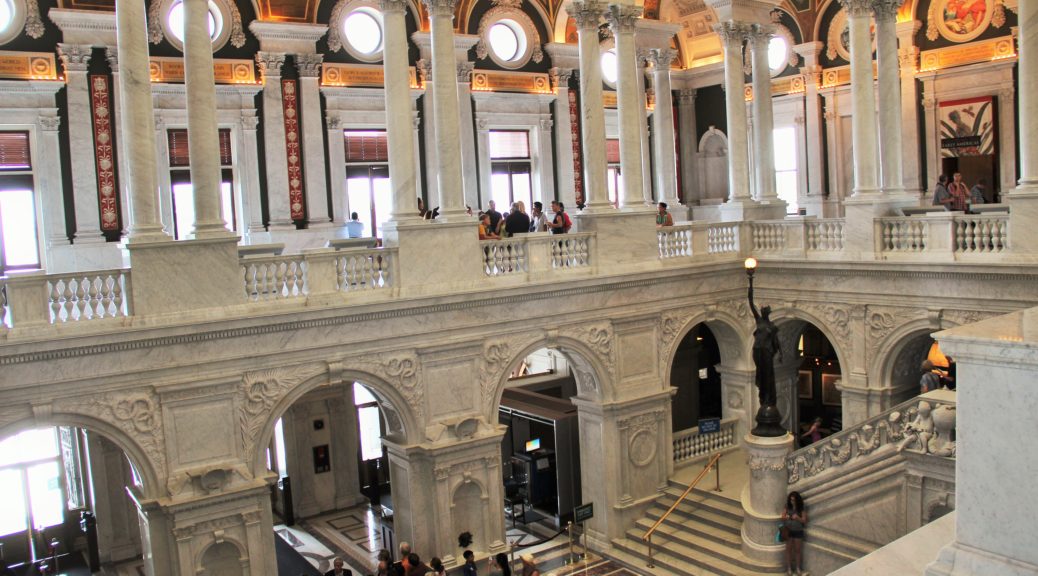
The Library of Congress
The pictures below are of the Library of Congress. Its history dates back to 1800 when Congress authorized the expenditure of $5,000 for books that could be used by Congress for reference purposes. Initially the library was located in the Capitol building, but during the War of 1812, British troops set fire to the Capitol and the library was lost. President Thomas Jefferson, at that time retired from office, offered his personal library as a replacement. Congress authorized almost $24,000 to pay Jefferson for his collection. His was considered one of the finest libraries in the country. Jefferson believed that all subjects should be important to those serving in Congress and this continues to be the philosophy of the Library of Congress today. The Library of Congress collections are housed in three buildings and include about 150 million items, including books, sound recordings, photographs, maps, sheet music and movies.
This building opened in 1897. The building was originally named the Library of Congress Building but was renamed the Thomas Jefferson Building in 1980. It was restored between 1984 and 1997.

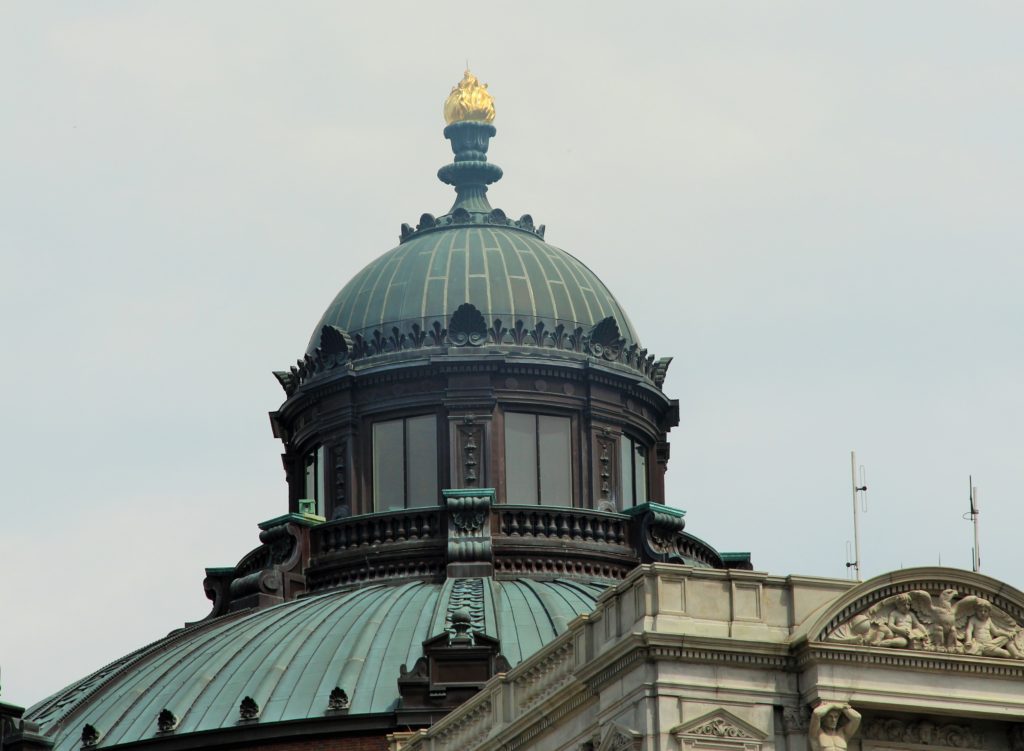
The intern who provided us with a tour of the U.S. Capitol suggested we take the tunnel that connects the Capitol building to the Library of Congress. We did as he suggested and were amazed at the beauty when we arrived in the Library of Congress. These are some of the pictures of the interior of the building – as you can see, the interior is quite remarkable. Seventy-five feet above the marble floor is a stained-glass skylight. Among the marble pillars, staircases, sculptures and paintings are symbols of knowledge and learning such as books, scrolls and torches.

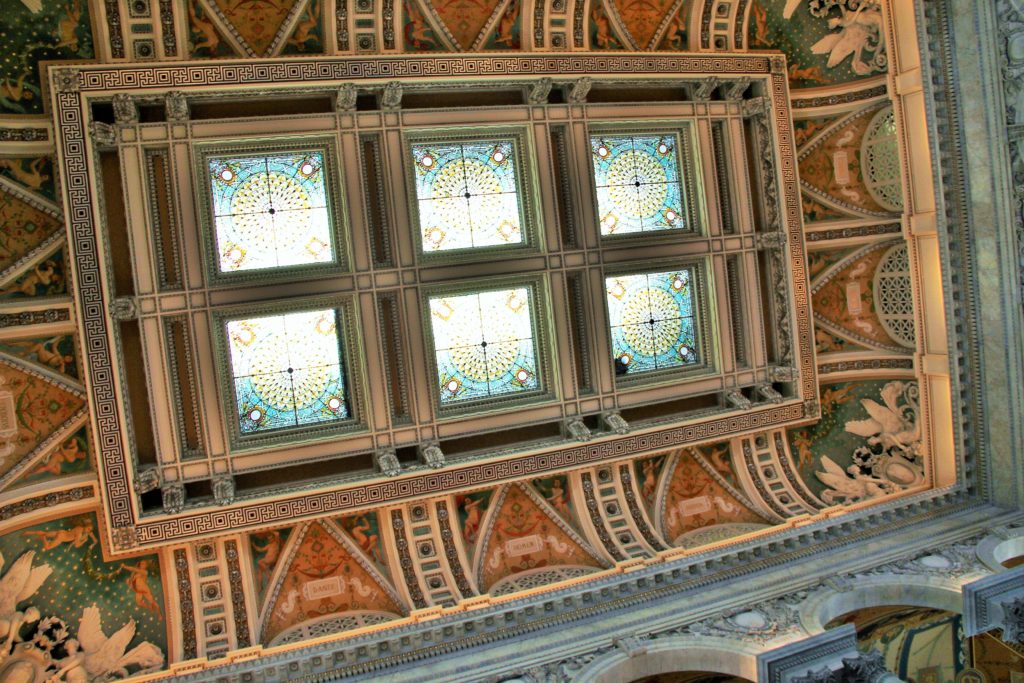
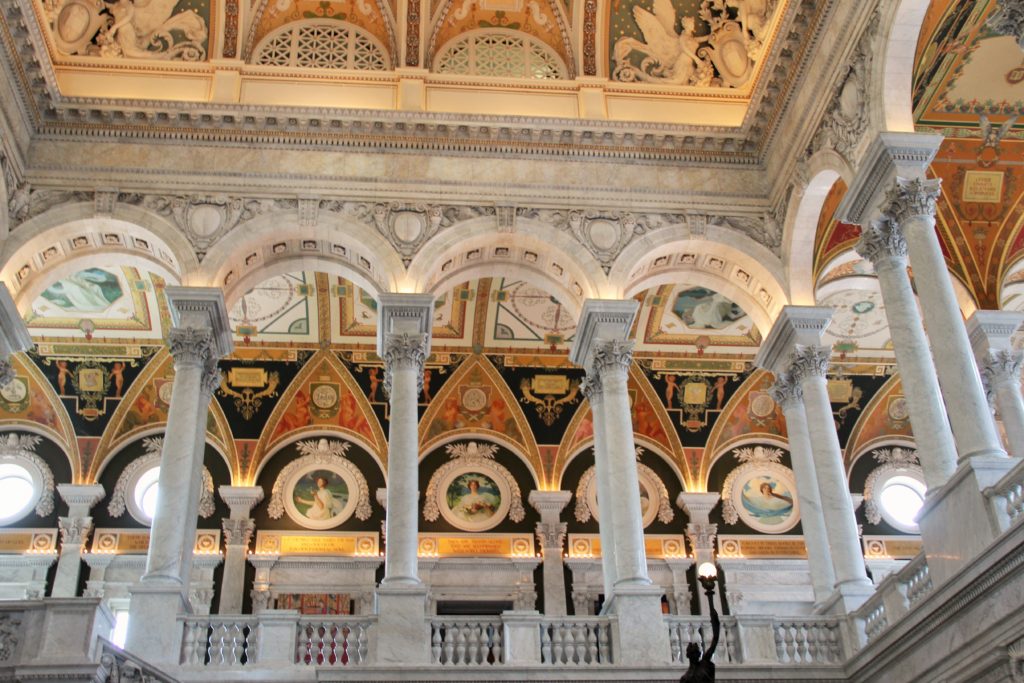
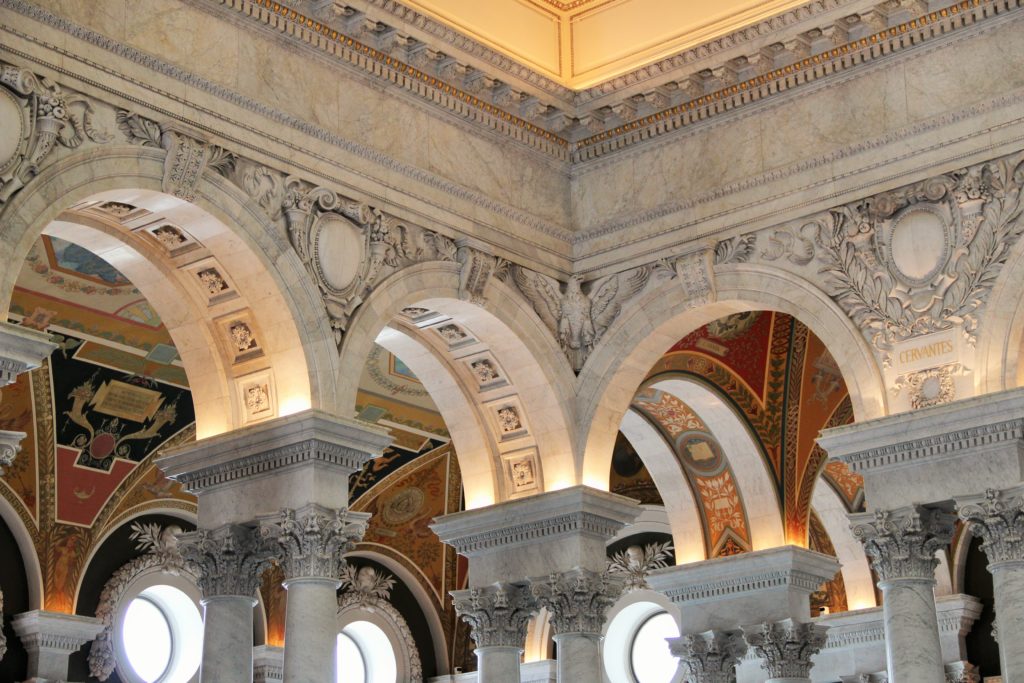
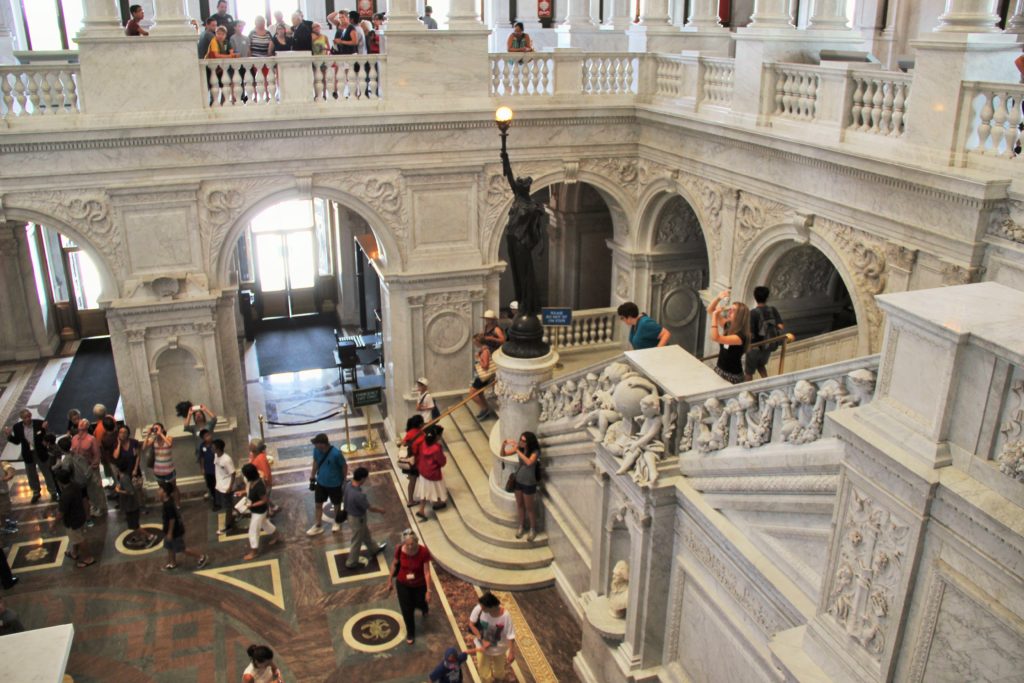
These are some more detailed pictures of the interior. The first picture below is of the Commemorative Arch which leads to the Main Reading Room. Just under the words, Library of Congress, you will see a sculpture entitled “The Students.” The young person on the left holds a book, acquiring knowledge through reading. The older person on the right is meditating, thinking about his observations of life.
The building also showcases some of the scientific achievements of the people of the United States. This is true in the second picture, a woman holding a torch of an electric light. Electricity was discovered by Benjamin Franklin and this was the first building in Washington D.C. built with electricity installed. The statue celebrates this achievement.
The third picture is a mosaic depicting the Roman goddess, Minerva. In this work, she is the Minerva of Peace, but according to the artist, peace is obtained through warfare. Minerva is the goddess of learning and wisdom. In her left hand she holds a scroll, with a list of different fields of learning including architecture, law, statistics, sociology, mechanics and zoology. Next to Minerva is a small statue of Nike, representing victory. She holds a laurel wreath in her left hand (victory) and a palm branch in her right (peace).
The last picture in this section is of putti, sculptures of baby boys representing different occupations common at the time the building was constructed. The ones pictured are a farmer, holding a sickle and wheat; a bacchanalian, holding grape vines and a champaign glass; a hunter, holding a rabbit and rifle; and a mechanic, holding a cogwheel and a laurel as a symbol of achievement.
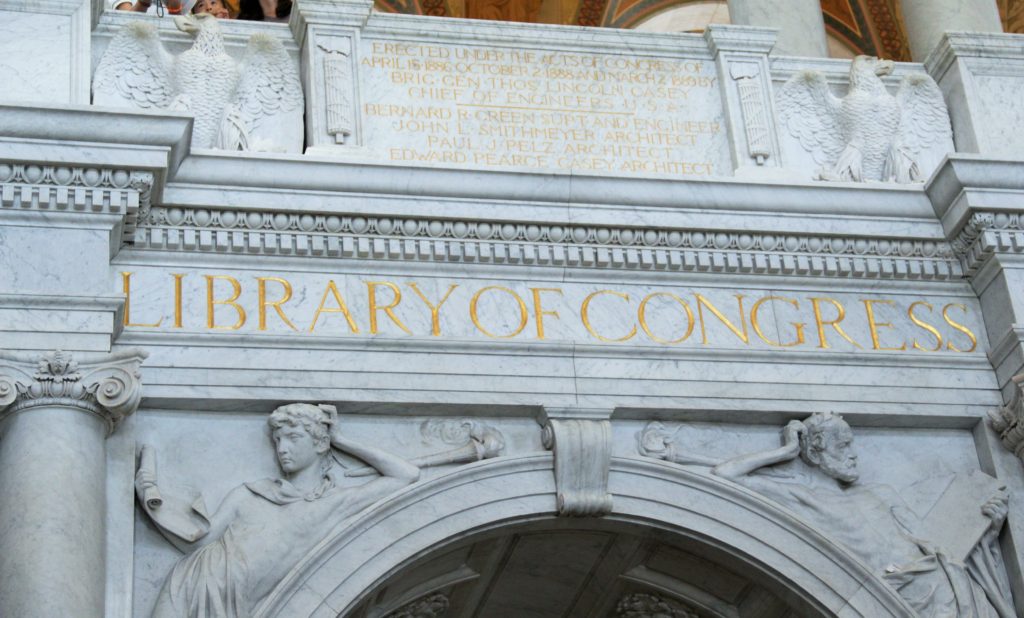



In addition to the time we spent appreciating the building, we also looked at a few of the exhibits. The first picture below is of the Gutenberg Bible. It was probably printed in 1455 and is printed on vellum, which is a parchment paper. The large capital letters and coloring were drawn by hand. The significance of the printing is captured in this statement from the Library of Congress website:
The Gutenberg Bible is the first great book printed in Western Europe from movable metal type. It is therefore a monument that marks a turning point in the art of bookmaking and consequently in the transition from the Middle Ages to the modern world. Gutenberg’s invention of the mechanical printing press made it possible for the accumulated knowledge of the human race to become the common property of every person who knew how to read…
Library of Congress website (loc.gov)
The second picture below is also of a Bible, this one the Giant Bible of Mainz. This Bible was copied by hand by one person. The writer documented when he began writing (April 4, 1452) and when he finished (July 9, 1453). It is written on vellum, with the pages measuring 16 inches by 22 inches.
The final picture in this section is a map of North America. The Library of Congress has one of the largest collections of maps in the world. This one was published in 1755 and was one of the most well-known maps of its time. The map was used to establish the boundaries of the United States at the 1783 Treaty of Paris.


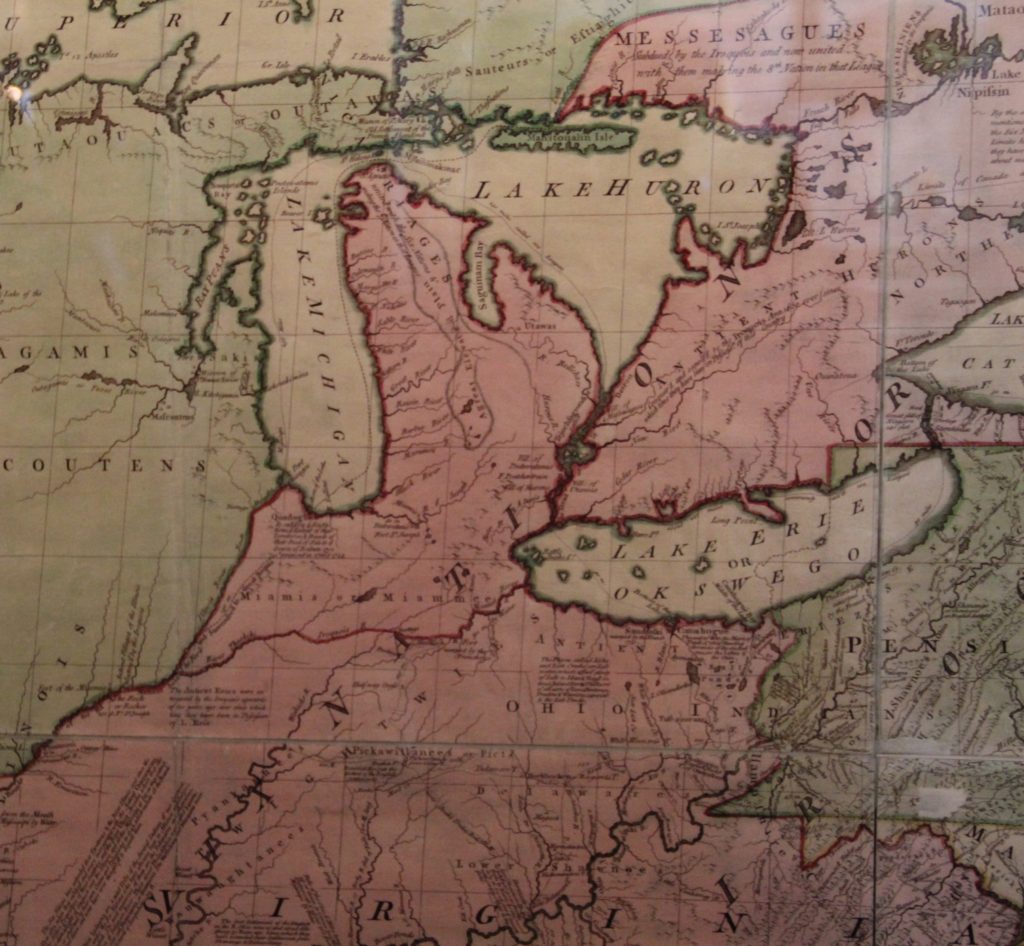
When I did some research for this posting, I also learned that many of the Library’s works are available on line. One of the interesting collections I found were pictures that were not or are no longer copyrighted and can be downloaded. There are several categories of works, including World War I Posters, African-American Women Changemakers, Baseball Cards and Historical Travel Pictures. Examples of each of these are below. The Library of Congress is a great resource even if you are only accessing it virtually (loc.gov).
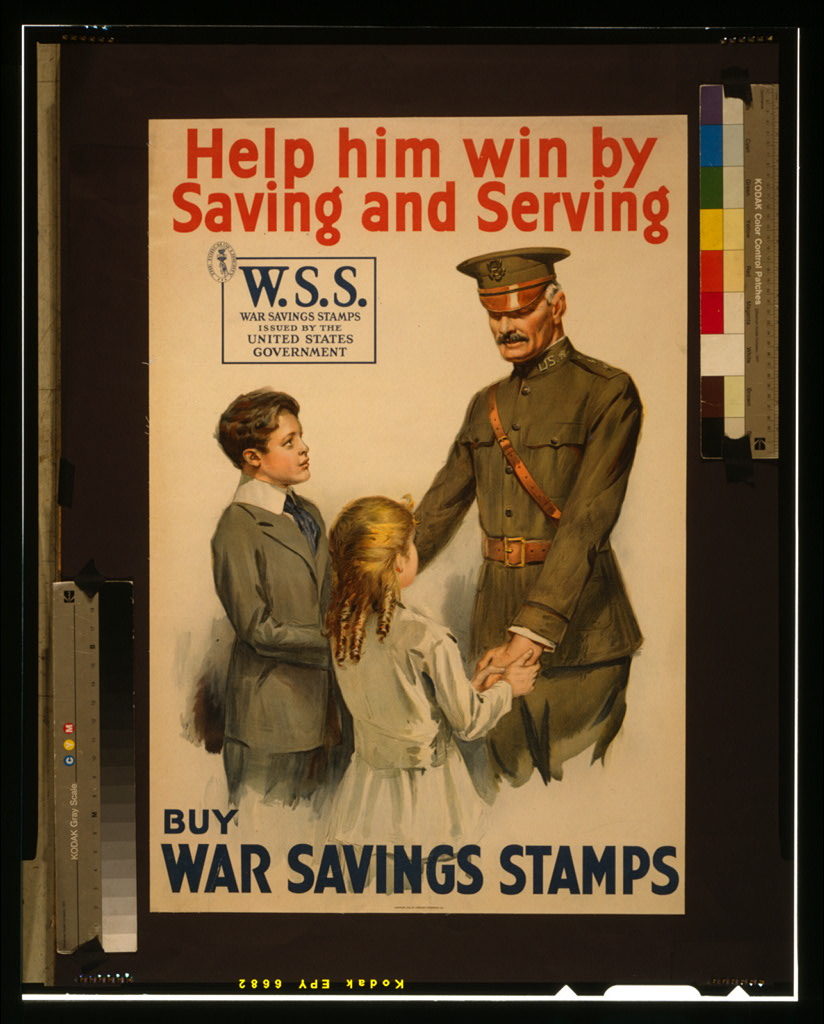

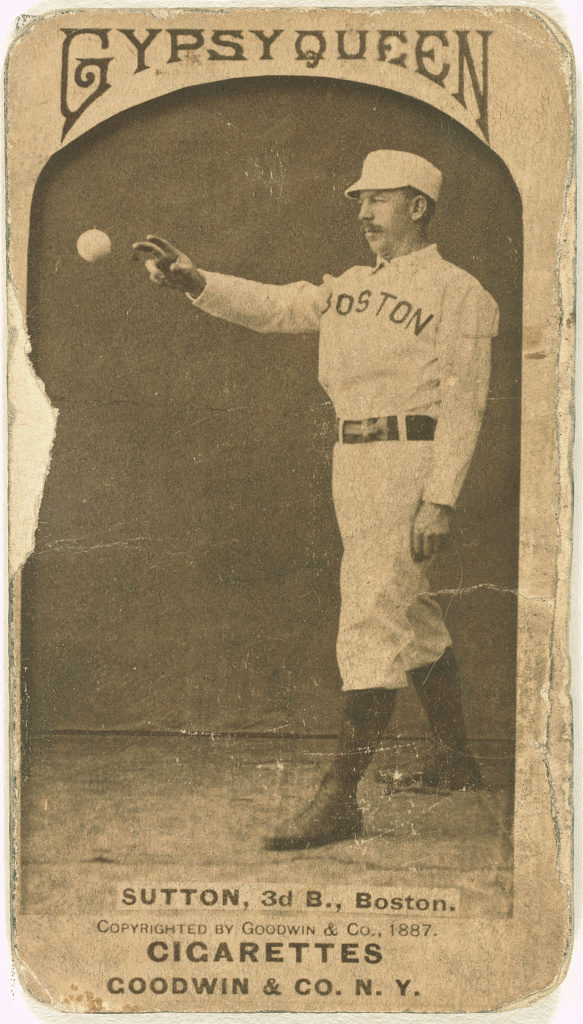
[Photograph] Retrieved from the Library of Congress, https://www.loc.gov/item/2007680723/
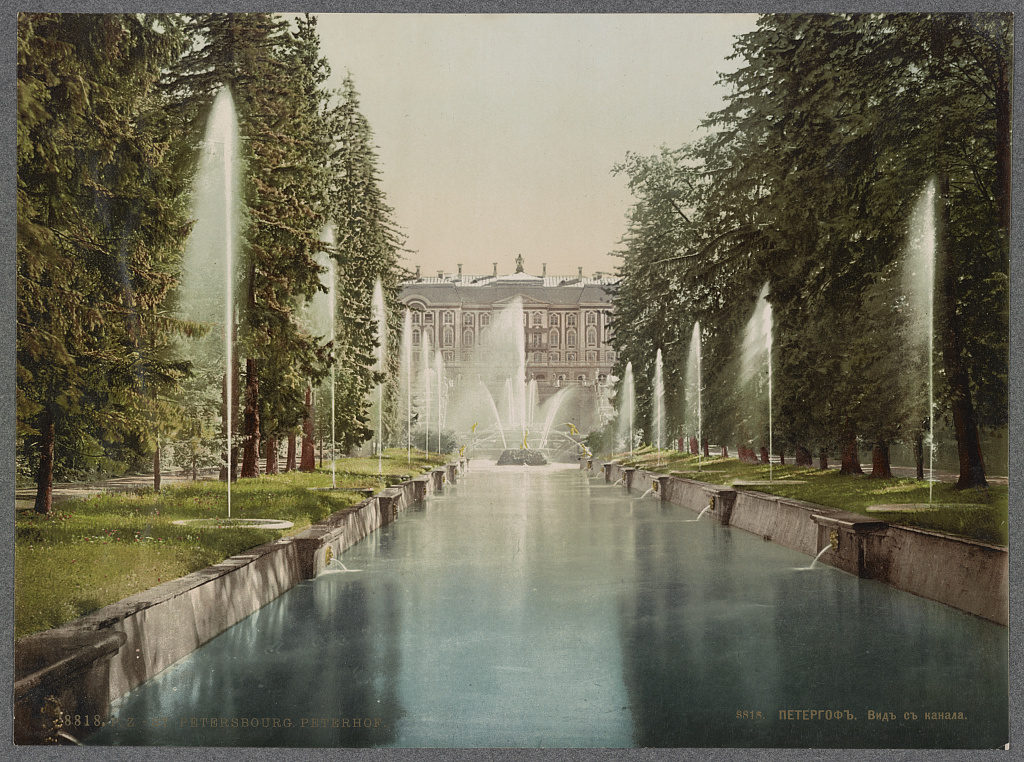
Saint Petersburg, ca. 1890. [Zürich, Switzerland: Photoglob Company, to 1906] Photograph. Retrieved from the Library of Congress, https://www.loc.gov/item/2017660925